From the Trenches
Treasures of Rathfarnham Castle
By ERIN MULLALLY
Monday, February 09, 2015
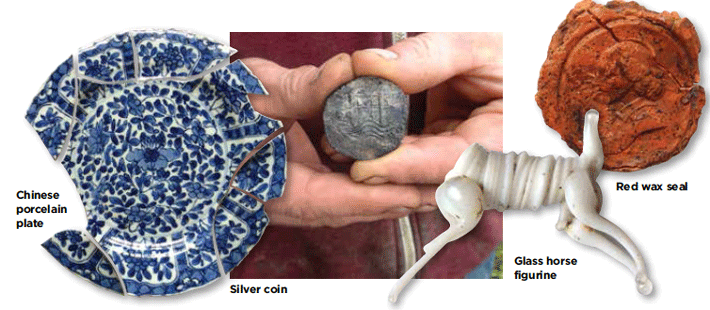
While undertaking restoration work at Dublin’s Rathfarnham Castle, archaeologists recently discovered a “treasure trove” that offers a rare glimpse into life in seventeenth-century Ireland. The artifacts include a foldable toothbrush, clay pipes, jewelry, porcelain, coins, chamber pots, intact goblets, and early wine bottles. The items, among 1,700 other objects, had been left inside a wash pit and sealed beneath a stone floor that perfectly preserved them. Exactly how the items got there is still being established. They may have been hidden when the castle was attacked, or placed there for washing and never retrieved. In any case, archaeologists believe that the artifacts belonged to a specific household, most likely that of Adam Loftus, grandson of Archbishop Adam Loftus, who served as Queen Elizabeth’s chief envoy to Ireland and who originally built the castle. “These artifacts give us a rare and intimate insight into the lavish lifestyle of the castle’s residents at the time. What makes it all the more exciting is that most of the artifacts are high-end imported goods from as far away as China, which tells us that Ireland may have been more fashionable at the time than previously thought,” says Antoine Giacometti, one of the chief archaeologists working on the project. Rathfarnham Castle will reopen to visitors in 2015 with the artifacts planned to go on public display.
Off the Grid
By MALIN GRUNBERG BANYASZ
Monday, February 09, 2015
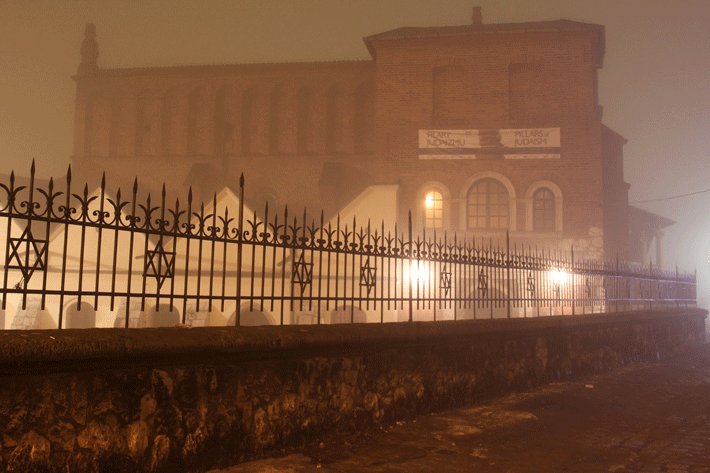 Krakow, one of Poland’s oldest cities, is well-known for its churches, but it also hosts the country’s most significant collection of Jewish monuments and buildings. At the end of the fifteenth century, the city’s Jewish population was driven out of the center and directed to settle in the district of Kazimierz. Known as the Oppidum Iudaeorum, or “Jewish City,” it grew into a religious and cultural center for the region’s Jews. By the 1930s more than 60,000 lived there, but the Nazi occupation rendered the district a virtual ghost town. Recently scholars, historians, and archaeologists have taken a new interest in the area. Dariusz Niemiec of the Institute of Archaeology of the Jagiellonian University and a team of students are excavating in and around the Old Synagogue, the country’s oldest standing example, in the heart of the Oppidum Iudaeorum. It has a long and storied history that follows the fortunes of Poland, from the building’s initial construction in the Gothic style in the beginning of the fifteenth century, to its reconstruction in 1570 by the workshop of Renaissance architect and sculptor Mateo Gucci, to a visit from Tadeusz Kosciuszko, who led a Polish uprising against Russian and Prussian rule in the late eighteenth century, to the twentieth century, when it was looted by the Nazis.
Krakow, one of Poland’s oldest cities, is well-known for its churches, but it also hosts the country’s most significant collection of Jewish monuments and buildings. At the end of the fifteenth century, the city’s Jewish population was driven out of the center and directed to settle in the district of Kazimierz. Known as the Oppidum Iudaeorum, or “Jewish City,” it grew into a religious and cultural center for the region’s Jews. By the 1930s more than 60,000 lived there, but the Nazi occupation rendered the district a virtual ghost town. Recently scholars, historians, and archaeologists have taken a new interest in the area. Dariusz Niemiec of the Institute of Archaeology of the Jagiellonian University and a team of students are excavating in and around the Old Synagogue, the country’s oldest standing example, in the heart of the Oppidum Iudaeorum. It has a long and storied history that follows the fortunes of Poland, from the building’s initial construction in the Gothic style in the beginning of the fifteenth century, to its reconstruction in 1570 by the workshop of Renaissance architect and sculptor Mateo Gucci, to a visit from Tadeusz Kosciuszko, who led a Polish uprising against Russian and Prussian rule in the late eighteenth century, to the twentieth century, when it was looted by the Nazis.
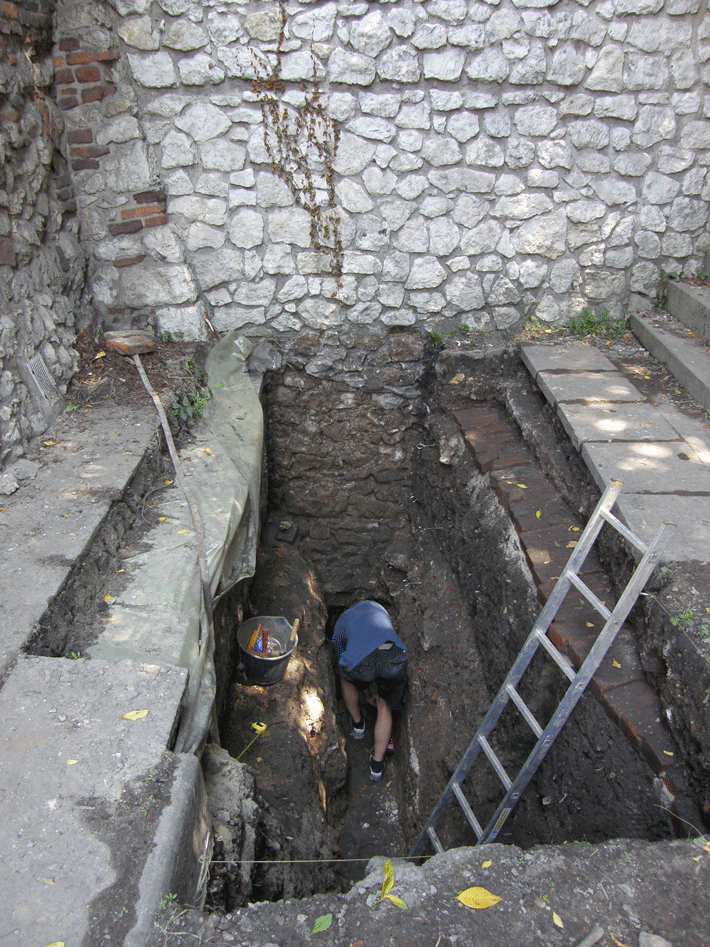 The site
The site
The Old Synagogue is a rare surviving example of what is known as a “fortress synagogue,” so called for its features borrowed from military architecture. Its windows, for example, are placed far above ground level, and its thick walls are buttressed to withstand assault. After restoration in the 1950s, the synagogue was opened as part of the Historical Museum of the City of Krakow. Niemiec’s archaeological work is focused on the exterior courtyard and aims to identify the oldest parts of the foundation and the cultural layers associated with them. Visitors today can see exhibits on various aspects of Jewish life in Krakow, as well as Cracovia Iudaeorum 3D, a digital reconstruction of the history of the district supplemented with archaeological finds, including ceramic vessels with Hebrew inscriptions.
While you’re there
It would take weeks to visit all of Krakow’s historical sites, but visitors should start with the city’s Old Town, a UNESCO World Heritage SIte brimming with cafes and shops and a main square that is the largest medieval square in Europe. The Wawel Royal Castle complex, overlooking the Vistula River, once a royal residence, today contains a priceless collection of sixteenth-century Flemish tapestries. More recent history is reflected at the site of the Płaszów concentration camp and Oskar Schindler’s Factory, which houses a museum dedicated to the story behind Steven Spielberg’s Schindler’s List.
Seismic Shift
By DANIEL WEISS
Monday, February 09, 2015
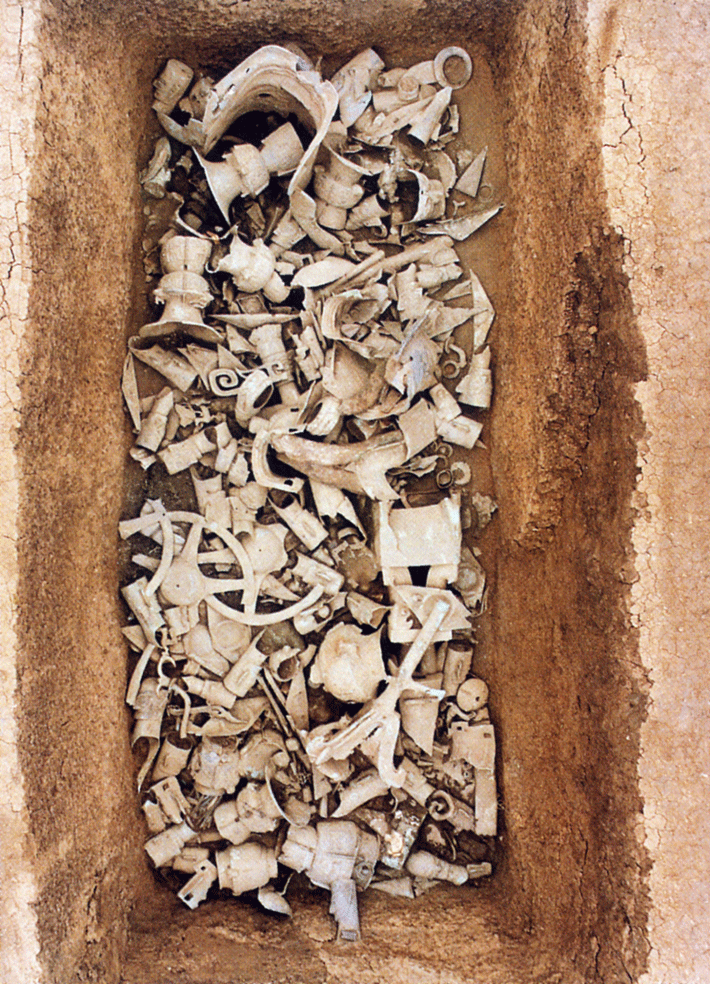 Sanxingdui was a Bronze Age civilization that flourished in China’s fertile Sichuan Basin for several hundred years before mysteriously disappearing around 1100 or 1200 B.C. Around the same time, a similar civilization sprang up in Jinsha, some 30 miles from Sanxingdui. Experts generally accept that the Jinsha civilization is a continuation of the Sanxingdui culture, but have been puzzled by what prompted the move. War? Floods? Now, a Chinese scientist has argued that the actual cause was a massive earthquake that led to a landslide that diverted Sanxingdui’s primary water source so that it flowed past Jinsha instead.
Sanxingdui was a Bronze Age civilization that flourished in China’s fertile Sichuan Basin for several hundred years before mysteriously disappearing around 1100 or 1200 B.C. Around the same time, a similar civilization sprang up in Jinsha, some 30 miles from Sanxingdui. Experts generally accept that the Jinsha civilization is a continuation of the Sanxingdui culture, but have been puzzled by what prompted the move. War? Floods? Now, a Chinese scientist has argued that the actual cause was a massive earthquake that led to a landslide that diverted Sanxingdui’s primary water source so that it flowed past Jinsha instead.
Much of what is known about Sanxingdui civilization comes from two pits dating to around the time of its disappearance. The pits contained hundreds of jade, bronze, and ivory objects that had been ritually broken or burned and then buried, and their discovery in 1986 shook up the world of Chinese archaeology.
Although some jade and stone artifacts had been found in the area in 1929, experts had thought that sophisticated Chinese civilization at the time was centered along the Yellow River in the distant Central Plains region. But the pits, which yielded expertly worked bronze items, including several giant masks with strangely distorted features, made clear that the Sanxingdui civilization was quite advanced as well. In 2001, the Jinsha site, discovered within the modern-day provincial capital of Chengdu, was found to contain bronze items that share a similar artistic vocabulary.
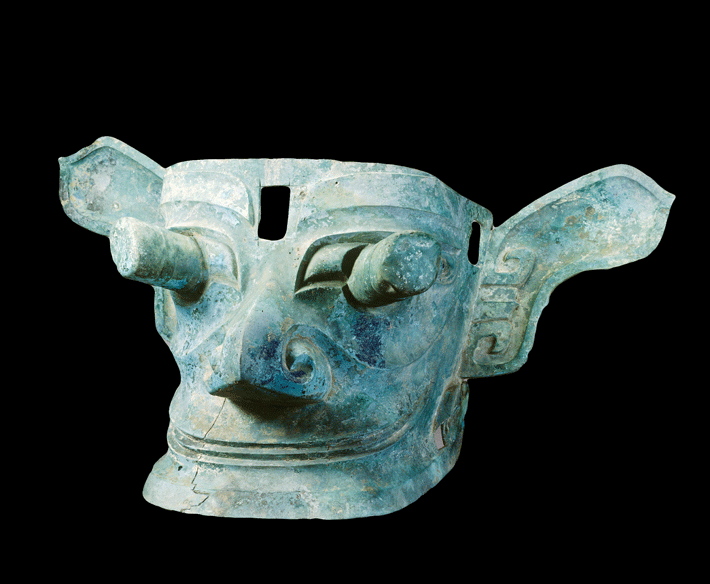 Niannian Fan, a scientist specializing in rivers at Sichuan University in Chengdu, says his interest in the Sanxingdui-Jinsha puzzle was first piqued when he noticed that the ravines and beds holding a number of waterways leading to and passing the Sanxingdui site were much wider than their current rate of flow would suggest. It seems they had once held much larger rivers. After the devastating 2008 Sichuan earthquake, Fan hypothesized that another massive earthquake had struck the same area more than 3,000 years ago, causing a landslide high in the mountains that changed the course of the Minjiang River.
Niannian Fan, a scientist specializing in rivers at Sichuan University in Chengdu, says his interest in the Sanxingdui-Jinsha puzzle was first piqued when he noticed that the ravines and beds holding a number of waterways leading to and passing the Sanxingdui site were much wider than their current rate of flow would suggest. It seems they had once held much larger rivers. After the devastating 2008 Sichuan earthquake, Fan hypothesized that another massive earthquake had struck the same area more than 3,000 years ago, causing a landslide high in the mountains that changed the course of the Minjiang River.
“The earthquake would not have destroyed Sanxingdui directly,” says Fan. “But the water level in Sanxingdui would have decreased sharply just one or two days after the earthquake.”
Fan has gathered preliminary evidence to back up his hypothesis. Using Google Earth, he found that a stretch of mountainous terrain through which the old river would have flowed on its way to Sanxingdui lacks signs of glacial erosion that should be present, suggesting that this section may have been covered up by a landslide. In addition, he notes, an ancient text records that an earthquake occurred in 1099 B.C. in the capital of the Zhou Dynasty in Shaanxi Province. This is around 300 miles from what he presumes to have been the quake’s epicenter, but its magnitude would have ensured it was felt there. (Neither the Sanxingdui nor the Jinsha civilization left any written records.)
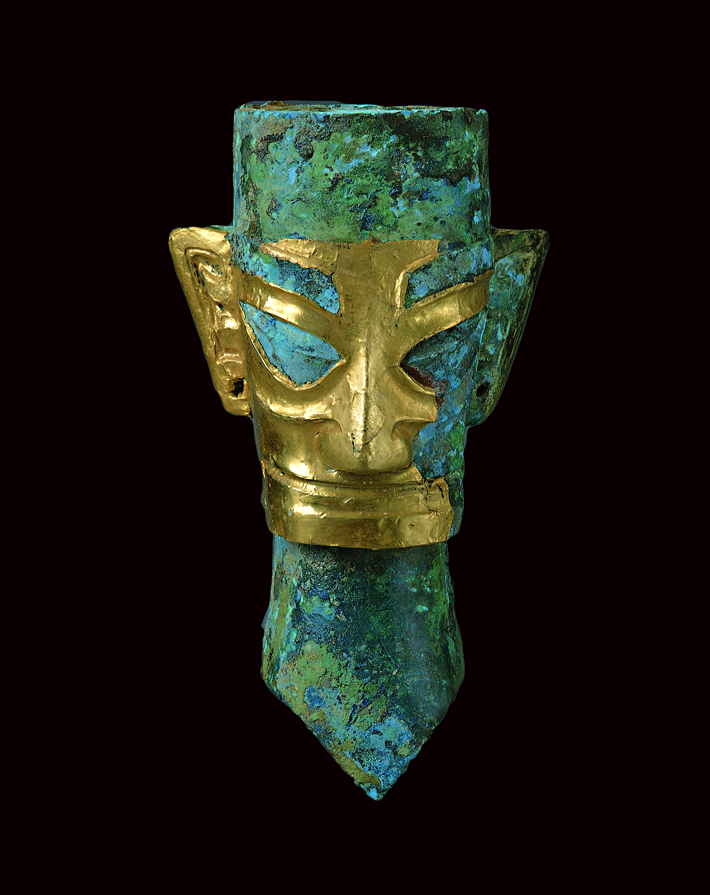 Agnes Hsu-Tang, an archaeologist and host of the “Mysteries of China” series on History Channel Asia, believes that Fan’s hypothesis “is the most rational explanation [for the move from Sanxingdui to Jinsha] I have heard up to this point.”
Agnes Hsu-Tang, an archaeologist and host of the “Mysteries of China” series on History Channel Asia, believes that Fan’s hypothesis “is the most rational explanation [for the move from Sanxingdui to Jinsha] I have heard up to this point.”
Still, the earthquake and landslide hypothesis can’t explain why the broken and burnt objects were thrown into the pits at Sanxingdui around the time the site was abandoned. “These sacrificial pits might not have anything to do with the fleeing, but may have been a sacrificial ritual carried out regardless of the natural disaster,” says Hsu-Tang. “There is evidence suggesting that they did not do it in a hurry, that it was very deliberate, and that the objects were not meant to be recovered. And that’s what remains so mysterious.”
Advertisement
Advertisement
IN THIS ISSUE
From the Trenches
Seismic Shift
Off the Grid
Treasures of Rathfarnham Castle
History's Largest Megalith
Squaring the Circles
Hidden in a Coin Hoard
Autumn of the Master Builder
Buried With Care
New Mosaics at Zeugma
How to Eat a Shipwreck
Tomb of the Jealous Dog
Shackled for Eternity
Treason, Plot, and Witchcraft
Advertisement

Recent Issues
-
 May/June 2024
May/June 2024
-
 March/April 2024
March/April 2024
-
 January/February 2024
January/February 2024
-
 November/December 2023
November/December 2023
-
 September/October 2023
September/October 2023
-
 July/August 2023
July/August 2023
-
 May/June 2023
May/June 2023
-
 March/April 2023
March/April 2023
-
 January/February 2023
January/February 2023
-
 November/December 2022
November/December 2022
-
 September/October 2022
September/October 2022
-
 July/August 2022
July/August 2022
-
 May/June 2022
May/June 2022
-
 March/April 2022
March/April 2022
-
 January/February 2022
January/February 2022
-
 November/December 2021
November/December 2021
-
 September/October 2021
September/October 2021
-
 July/August 2021
July/August 2021
-
 May/June 2021
May/June 2021
-
 March/April 2021
March/April 2021
-
 January/February 2021
January/February 2021
-
 November/December 2020
November/December 2020
-
 September/October 2020
September/October 2020
-
 July/August 2020
July/August 2020
-
 May/June 2020
May/June 2020
-
 March/April 2020
March/April 2020
-
 January/February 2020
January/February 2020
-
 November/December 2019
November/December 2019
-
 September/October 2019
September/October 2019
-
 July/August 2019
July/August 2019
-
 May/June 2019
May/June 2019
-
 March/April 2019
March/April 2019
-
 January/February 2019
January/February 2019
-
 November/December 2018
November/December 2018
-
 September/October 2018
September/October 2018
-
 July/August 2018
July/August 2018
-
 May/June 2018
May/June 2018
-
 March/April 2018
March/April 2018
-
 January/February 2018
January/February 2018
-
 November/December 2017
November/December 2017
-
 September/October 2017
September/October 2017
-
 July/August 2017
July/August 2017
-
 May/June 2017
May/June 2017
-
 March/April 2017
March/April 2017
-
 January/February 2017
January/February 2017
-
 November/December 2016
November/December 2016
-
 September/October 2016
September/October 2016
-
 July/August 2016
July/August 2016
-
 May/June 2016
May/June 2016
-
 March/April 2016
March/April 2016
-
 January/February 2016
January/February 2016
-
 November/December 2015
November/December 2015
-
 September/October 2015
September/October 2015
-
 July/August 2015
July/August 2015
-
 May/June 2015
May/June 2015
-
 March/April 2015
March/April 2015
-
 January/February 2015
January/February 2015
-
 November/December 2014
November/December 2014
-
 September/October 2014
September/October 2014
-
 July/August 2014
July/August 2014
-
 May/June 2014
May/June 2014
-
 March/April 2014
March/April 2014
-
 January/February 2014
January/February 2014
-
 November/December 2013
November/December 2013
-
 September/October 2013
September/October 2013
-
 July/August 2013
July/August 2013
-
 May/June 2013
May/June 2013
-
 March/April 2013
March/April 2013
-
 January/February 2013
January/February 2013
-
 November/December 2012
November/December 2012
-
 September/October 2012
September/October 2012
-
 July/August 2012
July/August 2012
-
 May/June 2012
May/June 2012
-
 March/April 2012
March/April 2012
-
 January/February 2012
January/February 2012
-
 November/December 2011
November/December 2011
-
 September/October 2011
September/October 2011
-
 July/August 2011
July/August 2011
-
 May/June 2011
May/June 2011
-
 March/April 2011
March/April 2011
-
 January/February 2011
January/February 2011
Advertisement






